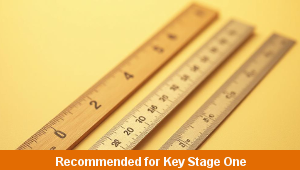Lesson Four – Bakery

This maths teaching pack for Key Stage One gets the children to practise using concrete equipment and pictorial diagrams to record how to share sets of objects into matching equal groups for twos and fives.
The class can explain and model how to count in twos and fives to check how they have shared each of the numbers into equal groups of two and five to complete the division calculations.
Download this teaching pack including a lesson plan, classroom activities and an interactive presentation to practise using concrete equipment and pictorial diagrams to record how to share sets of objects into matching equal groups for twos and fives
Activities in this teaching pack include a differentiated set of cards to record how to share different numbers into two equal groups for core and support ability levels and into five equal groups for extension ability levels using concrete equipment to model the division calculations and a template to record equal numbers of groups to twenty and fifty when sharing concrete equipment into twos and fives.
The interactive presentation gets the children to explore how to use concrete equipment and pictorial diagrams to share sets of objects into equal groups.
This lesson is part of a maths scheme of work to get the children to identify and explain how to use concrete equipment and pictorial diagrams to record equal groups of numbers to twenty by sharing numbers of different objects. There are teaching activities for shared learning, differentiated worksheets to support independent learning and interactive presentations to introduce concepts and key skills.
-

Animal Lists
Investigate how to compile lists using commas to present information about some of the special animals that live in habitats around the world
-

English Spelling Assessment
Assess abilities in spelling different vocabulary words based on the National Curriculum programmes of study for Key Stage One
-

Maths Measurement Assessment
Assess abilities in estimating, measuring and comparing a range of different measurements for length, mass and capacity
-

Family Life
Investigate and reflect on some of the special events and experiences that might happen in the life of a family
